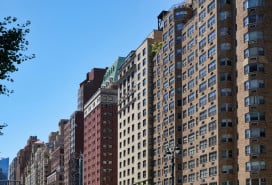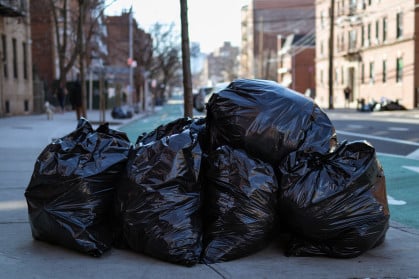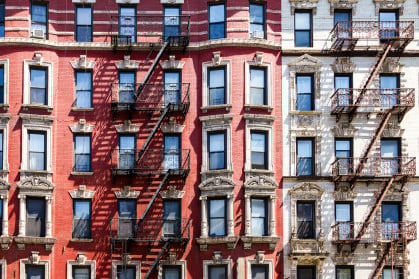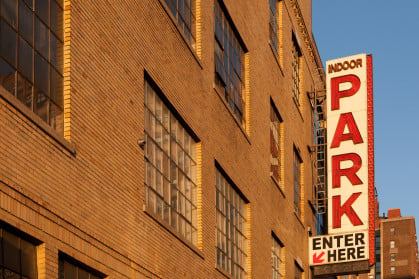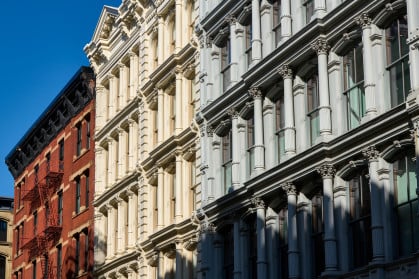What boards need to know about NYC’s parapet wall inspection requirements
- Most buildings will need to have their parapets checked out annually starting this year
- While not required, it’s a good idea to get a professional to handle the observation
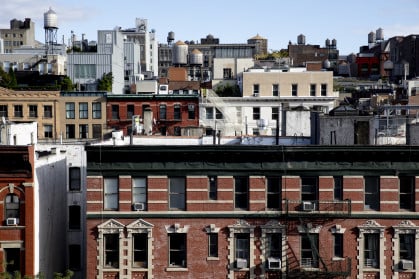
Parapets are the part of a building's roof that extends beyond the roof line and connects the outer walls to the roof.
iStock
The new year rings in a new requirement for New York City buildings: parapet inspections.
Almost all NYC properties need to have their parapets checked for unsafe conditions under Local Law 126, the same law that mandates parking garage inspections.
Parapet failures haven’t garnered the same headlines as the tragic collapse of a parking garage last year. But the NYC Department of Buildings is taking a proactive step to mandate the inspection of city parapets—a part of a roof that extends beyond a building’s roof line—to prevent serious accidents.
Parapets connect the outer walls of a property to the roof and are exposed to the elements on two sides, making them more at risk of degrading over time, says Stephen Varone, founder and president of Rand Engineering & Architecture.
“A very common component that fails is the parapet,” Varone says, adding, “[The DOB] always tries to put things in place before there are major failures. And hopefully they're relatively ahead of the curve on this one.”
Parapets often serve an aesthetic purpose or can keep residents from falling off a roof. But when they degrade, there’s a risk that crumbling bricks or stones could fall on pedestrians, which is why it’s crucial to make sure those facing public streets are safe.
Read on for everything your board needs to know about the parapet observation.
Does my building need to comply?
Every building with parapets that front a public right-of-way—such as a street, avenue, or sidewalk—is required to have its parapets inspected. The only properties exempt from the requirement are detached one- or two-family houses or buildings with a barrier that prevents access to the exterior wall.
For some smaller condo and co-op buildings, a parapet inspection may be the first time a professional has looked at the building’s facade in decades, Varone says. Buildings over six stories tall need to undergo a facade inspection every five years, but those six stories or under don’t have to meet this requirement.
“For some of the oldest housing stock in the city—like five-story walk ups in the Lower East Side—I can count on two hands how many times we've been asked to go and inspect one of those buildings,” Varone says. “I think the majority of the buildings under six stories are never inspected by a professional.”
What does my building need to do?
Your building needs to have a “competent” person observe the property’s parapets annually, starting this year. Even though the observer can be anyone capable of doing the job, such as a super, handyman, or a licensed architect or engineer, you may want a licensed professional to do the job (more on this below).
Whoever does the observation needs to prepare a report that owners must keep for at least six years in case the DOB wants to view them, but your building does not have to file the report to the DOB, as with a facade inspection.
If you discover unsafe conditions, the person doing the observation must notify the DOB immediately by both calling 311 and emailing the DOB. Your building is also responsible for installing a sidewalk shed, fence, or safety netting to keep the public safe while your building fixes the issue within 90 days of notifying the DOB.
What types of conditions are potentially dangerous?
The person doing the observation should make sure the parapet stands up straight and is intact—meaning it’s not crumbling to pieces.
The most common issue in parapets tends to be cracks that allow water to get into the parapet, but observers should also be on the lookout for poor past repair jobs, Varone says.
“Sometimes if the wall is deteriorating, instead of repairing it they just cover it with tar,” Varone says. “The worst we ever saw was when we peeled the tar off a building and it was literally like a bag of sand. The wall had just deteriorated.”
Who should inspect the parapet?
It’s best to get a registered engineer or architect to do the observation to make sure the parapet is properly inspected, says Michael Wolfe, chair of the Real Estate Board of New York’s residential management council and a board member of the Council of New York Cooperatives & Condominiums.
If your property’s super were to do the observation and miss something—say a crumbling outer wall—the super could face legal liability for the mistake. In other words, they’re sticking their head above the metaphorical parapet.
“The vast majority of industry experts and organizations recommend that you engage a licensed engineer or registered architect to perform the annual inspection,” Wolfe says. “They have the required expertise and it also reduces and/or eliminates liability for the building. Moreover, it enhances safety.”
Varone says his own firm has gotten hundreds of requests to handle parapet inspections for that reason.
“The typical owner is going to have to bring in a professional,” Varone says. “It does make sense to bring in someone who, one, is trained to analyze and look for structural failure and who, two, has the liability insurance to cover any errors.”
If you do hire an architect, costs can range from $1,800 for small buildings to $10,000 for a large building with multiple roofs with parapets, Varone says.
Sign Up for our Boards & Buildings Newsletter (Coming Soon!)
Thank you for your interest in our newsletter. You have been successfully added to our mailing list and will receive it when it becomes available.


